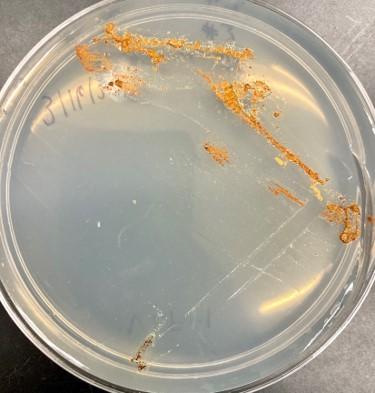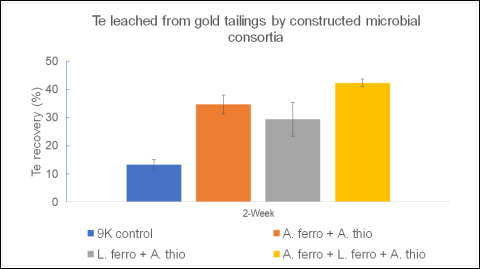
CMI researchers at Idaho National Laboratory conducted the research for this highlight
Achievement
The activity of iron- and sulfur-oxidizing microorganisms can enhance tellurium extraction from mine tailings.
Significance and impact
Te is critical for CdTe-based photovoltaics. Currently almost all Te is produced from copper anode slimes, and U.S. production is limited to one facility. Recovery from domestic mine wastes could provide more Te than total current imports, and biorecovery from a waste product could have significant environmental benefits.
Details and next steps
- Te was solubilized from gold tailings by constructed consortia of iron and sulfur oxidizing microorganisms, likely enhanced by indigenous microbes.
- Different conditions will be tested to improve recovery and extend the approach to other tailings samples.

